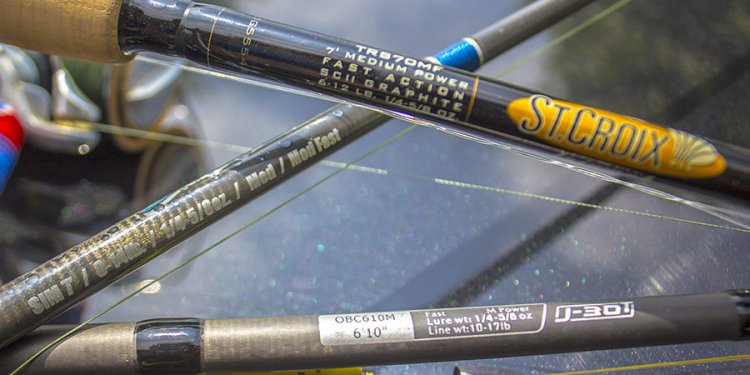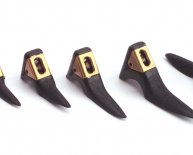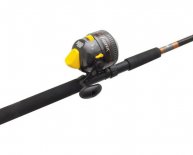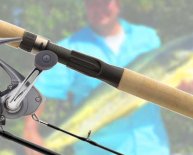
Fishing rod length Guide
Concern: I understand you could possibly want a very brief rod for tiny channels and a 10-footer for float-tube fishing or steelheading, but once you’re purchasing a trout-weight pole (say 4 through 7), how do you decided whether you would like an 8-1/2 footer or a 9-footer? Most businesses provide rods both in lengths. Does the small difference between length really make a difference? In that case, what?
John K., Bedford, NH
Solution: Well John, I’m planning make the large roadway and resist making the hundred jokes involving the term “six inches” that took place if you ask me nearly straight away, concentrating as an alternative on what’s really a truly interesting concern.
As it is my wont within these situations, I’ve thrown issue to specialists world wide to see just what they believe towards relative merits of the quite typical pole lengths.
Tom Rosenbauer, composer of the Orvis help guide to Fly Fishing in addition to soon-to-be-released Orvis help guide to Small-Stream fly-fishing: I think it makes a positive change if you intend on performing plenty of nymphing or fishing dries across challenging currents. I could throw as far as needed with an 8½-foot pole, nonetheless it’s the mending and line control in which We occasionally feel hindered using the shorter rod. If in doubt, I’d state always go with the 9-footer. The weight huge difference these days is minimal, if you will be selecting between an 8½-foot and a 9-foot pole, you are not worried about tight casting spots. Also for smaller Eastern rivers such as the Battenkill or Willowemoc, I use a 9-footer.
Jim Bartschi, president of Scott Fly Rod Company: Yes, 6 ins do make a difference, such as when you look at the swing fat, or identified fat, of the rod. The reduced pole will feel significantly lighter in hand and through casting stroke. Even three or four inches really make a difference.
We tend to view rods between 8½ and 9 feet as “dry-fly style” rods being extremely easy to throw. They produce high range rate and so are really accurate. They aren’t our very first choice for fishing programs that need many roll casting and mending, and for casting a number of the larger trout rigs seen on streams today—like two fold streamers or huge signs with multi-fly rigs underneath them—but for lots more “typical” programs, like fishing a hatch or hopper-dropper fishing, a trout rod under 9 feet but at the very least 8.5 foot is perfect.
Dave Kumlien, longtime guide and outfitter and mind of Trout Unlimited’s Aquatic Nuisance Species program: great concern! Having offered fly rods for over 25 years, its a concern I happened to be often asked. My response is from a fishing and casting point of view, I don’t believe there is certainly that much distinction between the 8½ and 9 legs. For me, the important thing choice is the range of range weight. Seeking the range weight appropriate for the size of flies one fishes, the average measurements of seafood one is seeking, additionally the conditions under which one fishes i.e. many wind, long casts with huge flies on huge liquid or smaller flies under even more fragile problems, is always to me personally the main option. Perhaps the physicist could determine the benefits of 6 even more inches, but I can’t state that I’ve ever actually attached that much significance on huge difference.
I’ve constantly informed individuals to cast the rods these were considering buying, and buy the one which felt top to them and which most readily useful seemed to fit the fishing they oftentimes liked to do. Put simply, if a client owned a drift motorboat and liked to float our big Montana streams just like the Madison and Yellowstone putting bigger dries, nymphs, and streamers, I’d typically suggest the 9- to 9½-foot rods. If angler did countless wading, liked fishing small channels, I’d typically recommend the 8- to 8½-footers.
Larry Kenney, fiberglass-rod builder and co-founder of Scott fly fishing rod Company:Rod length choices appear to be influenced as much by fashion and a pack-mentality as by anything else. A 9-foot 5-weight pole could be the current default option for many trout fishing because that’s what every person suggests, what’s often stocked, and exactly what consequently offers the most—particularly to people who aren’t real confident in what they want. That configuration wasn’t always the scenario. Through the 1960s to early 1970s, the fly-fishing globe had been fixated on quick rods, a reaction, I imagine, into lengthy and instead heavy rods associated with pre-WWII era also to an emerging dry-fly tradition. Line-weight alternatives were different forty years back, too, with an increase of fishermen fishing the same as 6- and 7-weights for trout. Did people fishing 7½-foot 6-weights take fewer trout? I doubt it.
Graphite made lengthy rods for light outlines lighter plus useful, and the pendulum swung again. We marketed them as providing much better range control and also for the chance to fish an even more delicate light range, however they additionally sold simply because they were brand-new. The American angler loves “new”—it’s a promise of success and a good excuse for maybe not practicing using what you have while nonetheless longing for greater results. Very long graphite rods in addition sold because much more Eastern anglers were coming West to fish bigger western streams; there’s something about big liquid that produces you are feeling positively undergunned in the event that you’ve got a little pole, although the fish is right in front side people.
In any event, issue is not whether you should purchase an 8½-foot or a 9-foot trout rod, but alternatively what rod will best handle a fair test associated with circumstances your fishing presents and do this in a fashion that you love. I’d fat both those requirements similarly, by-the-way. In the event that you spend a lot of the time high-sticking or fishing an indication, a 9-foot pole might create good sense because the length offers simple mending and line control, despite distance. However if you are fishing dries at regular distances—which typically don’t go beyond 40 feet—you might be happier with an 8-foot pole, which are often quicker to set up play when a fish takes. You can also elect to limit the measurements of fly in addition to distance you are able to effortlessly fish it, and make use of your 7-foot 4-weight rod wherever you go. The fashion authorities are irritated, but why should you care?
Another solution, definitely, will be possess a lot of rods, in order to pick and choose, and fret endlessly over things to use. Or both. Rod makers will love you, therefore’s all grist when it comes to outdoor writer’s mill.

















